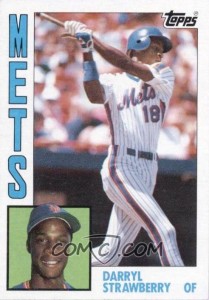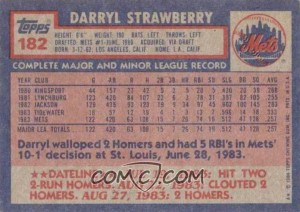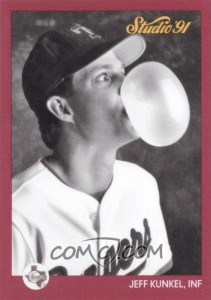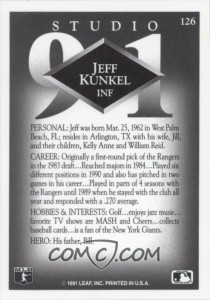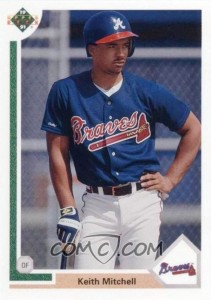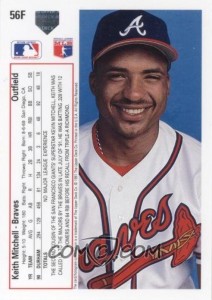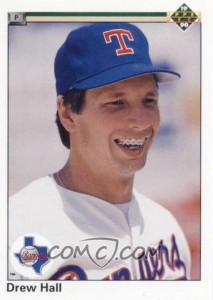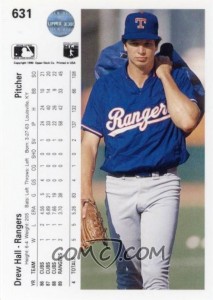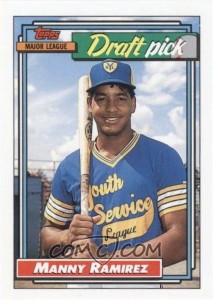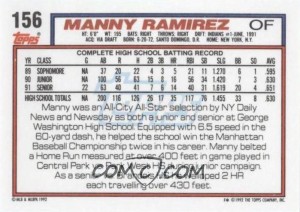The Card
It was 1984 when I first started collecting, so this Topps set was special to me. It’s a bit plain-looking by today’s standards, but back in the day, it’s use of color and type was bold and fresh.
This Darryl Strawberry rookie card was the first valuable baseball card I ever owned. I still have it in a plastic case. Today, it’s worth about $1.
The Player
Oh, Darryl.
Born and raised in the rough neighborhoods of Los Angeles, Strawberry was drafted first overall in the 1980 Major League Baseball Draft by the New York Mets. Darryl’s older brother Michael Strawberry was also selected in that draft, going to the Dodgers in the 31st round. Michael hit one professional home run before leaving baseball in 1981.
Darryl was a phenom, hitting for mind-popping power in the mostly powerless mid-80’s. His effortless leg kick and looping swing was a thing of beauty. I was at the April 4, 1988 game where he hit the roof of Montreal’s Olympic Stadium.
But he was plagued by discipline and maturity issues for his entire career. The wheels came off after being traded to the Dodgers. Starting in 1992, at the age of 30, personal problems, cocaine use, and colon cancer severely limited his playing time. He crushed the ball for the Yankees in 1999 at age 37, but that was his last hurrah.
Strawberry makes baseball-related appearances from time to time and dabbled in restaurant ownership. He has been advocating his newfound discovery of religion on television and donates large sums to charity. He seems to be leading a clean life now, but who really knows.
